Super Nutritious Salad to Counter Possible Easter Excess
Sounds like a cross word clue but was actually my attempt to have something nutritious on Easter Sunday. I’ve been getting more interested in a balanced and nutritious diet recently, and this meal was in anticipation of a plethora of eggs of the chocolate variety which I knew I would be unable to resist. I’ve called it Green Salad in a sort of understated way although it’s definitely more than a limp green iceberg lead creation!
Green Salad with Yorkshire Asparagus, Sheffield Hogweed, Avocado and Quinoa
The base of the salad is the super food Quinoa a seed which has been cultivated in the Andes going back to at least 3000BC. The interesting thing to me as a developing forager is that it belongs to the Goosefoot/Chenopodium family and a common weed/exciting foragers find is Fat Hen/Chenopodium album. So now I will looking out later in the season for the seeds although I am not sure which species Quinoa is derived from as there are over 120 species in the family the most I know is that you can get white, red or black Quinoa, so my Quinoa could be something else again. There is some more information about Quinoa at the bottom of this page.
Your first asparagus of the season I think is always exciting and having seen this Yorkshire produce I could’nt resist adding its shade of green to the mix. Avocado and sping onion also went in and then the mystery ingredient locally picked Hogweed. Hogweed, Heracleum sphondylium, is very common and has been used as a general fodder plant as could be guessed by its common names including Pigweed and Pig’s parsnip. From a culinary point of view only the very young shoots where the leaf is still unformed are best. At this point the usual warnings about not using wild food unless 100% sure of your identification apply, especially as Hogweed belongs to the notoriously dangerous carrot family. In the picture below you will see how a rogue weed got picked with my hogweed and this could easily be the poisonous Fools Parsely or worse still a Hemlock
Hogweed with a rogue stem
I steam/boiled the hogweed and asparagus before cooling ready for the salad. The hogweed had a flavour somewhere between parsley and aniseed, some of the stems being quite strongly flavoured and the texture a little mucilaginous. I may not be selling this too well but the younger the stem it seemed the better and I must try again!
The final component of the salad, and of course a crucial part of any salad, was the dressing. For this I am grateful to Claire Gillis at Integrate Nutrition who recommends keeping a seed jar! This gave me an idea for a dressing. The mix is 50% flaxseeds and 50% of a mixture of sesame, pumpkin and sunflower seeds. To gain the maximum benefit nutritionally its best to grind these just prior to consumption as this makes the nutrients more readily available to the body. Having a somewhat challenged store cupboard I had only pumpkin and sunflower seeds available but found that these ground down and whisked together with some rapeseed oil and a little balsamic vinegar and seasoning made a nutty deep tasting dressing which gave some body to the salad.
Having enjoyed this salad with some barbecued sea bass and a wild garlic/sorrel focaccia some Easter eggs did follow but we consumed these in moderation and vowed to work on some more tasty and super nutritious salads as we move towards summer!
Some more information about Quinoa from the Health and Beyond website:
Before cooking, the seeds must be rinsed to remove their bitter resin-like coating, which is called saponin. Quinoa is rinsed before it is packaged and sold, but it is best to rinse again at home before use to remove any of the powdery residue that may remain on the seeds. The presence of saponin is obvious by the production of a soapy looking “suds” when the seeds are swished in water. Placing quinoa in a strainer and rinsing thoroughly with water easily washes the saponin from the seeds. In South America the saponin which is removed from the quinoa is used as detergent for washing clothes and as an antiseptic to promote healing of skin injuries. The quinoa seed is high in protein, calcium and iron, a relatively good source of vitamin E and several of the B vitamins. It contains an almost perfect balance of all eight essential amino acids needed for tissue development in humans. It is exceptionally high in lysine, cystine and methionine-amino acids typically low in other grains. It is a good complement for legumes, which are often low in methionine and cystine. The protein in quinoa is considered to be a complete protein due to the presence of all 8 essential amino acids. Some types of wheat come close to matching quinoa’s protein content, but grains such as barley, corn, and rice generally have less than half the protein of quinoa. Quinoa is 12% to 18% protein and four ounces a day, about 1/2-cup, will provide a childs protein needs for one day. The 6-7% fat of quinoa is relatively high when compared to other grains, but it boasts a low sodium content and also provides valuable starch and fiber. Quinoa also contains albumen, a protein that is found in egg whites, blood serum, and many plant and animal tissues. The seeds are gluten-free which makes this a nutritious and flavorful alternative grain for those with gluten sensitivity.




